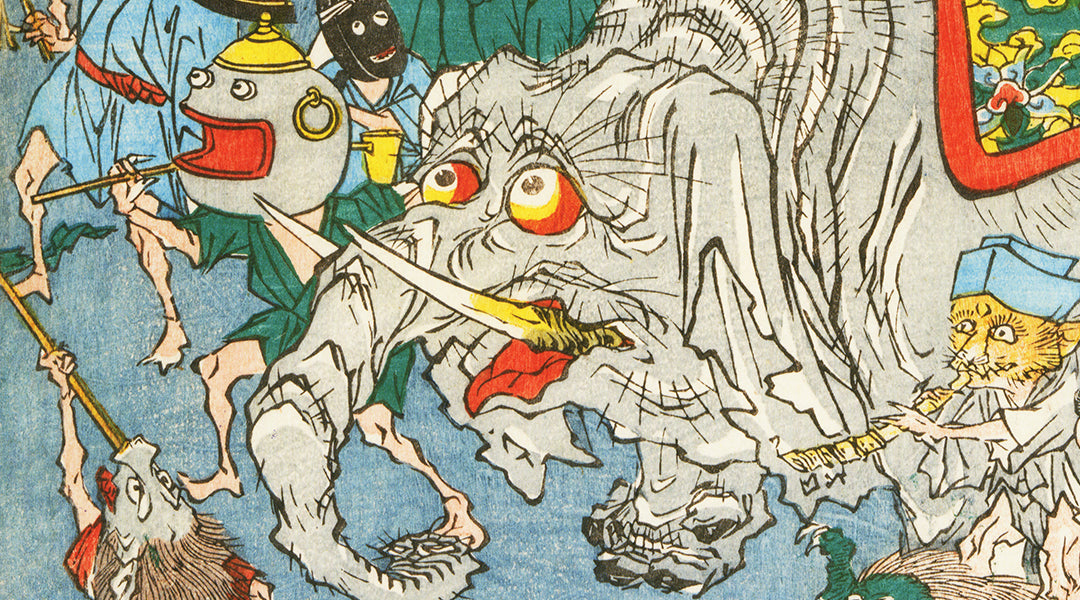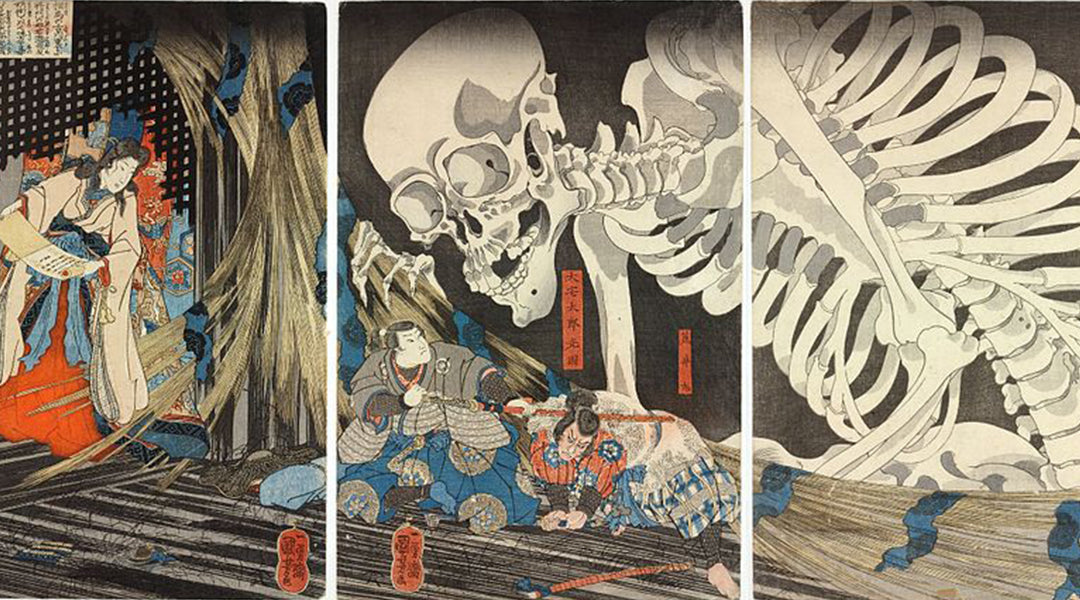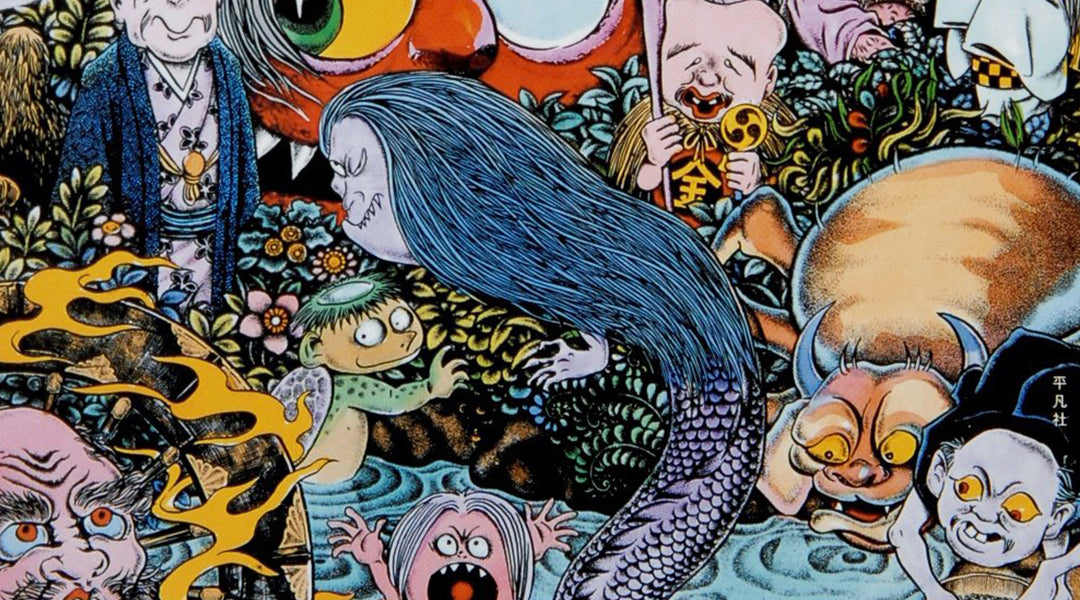If you’ve ever seen a film by Hayao Miyazaki or played a certain cult Japanese beast-collecting game, you’ve probably come into contact with the influence of the yōkai – the mischievous and, sometimes, terrifying supernatural beings that occupy an integral place in Japanese folktales and ghost stories. Throughout the years, the yōkai have helped people give a face to their deepest fears and retain a sense of wonder at the natural world. Their striking depictions in the ukiyo-e (woodblock prints) of the Japanese Edo period (1603–1867) have also made them a favorite motif among tattoo artists and connoisseurs alike. So, join us – if you dare – as we journey into the dark and mysterious world of the yōkai.
Occult origins
It is generally acknowledged that the precursors of the yōkai are the traditionally depicted scenes of Hyakki Yagyō, (literally “The night parade of one hundred demons”), which have featured in Japanese paintings and woodcuts since at least the fourteenth century. These elaborate images – combined with stories from Japanese folklore and mythology – formed the basis for the creation of over a thousand different supernatural creatures and beings, which came to be known collectively as “yōkai”.

Kawanable Kyōsai’s Night Parade of One Hundred Demons (1890).
Yōkai may take on many forms, including monsters, humanoids, or even inanimate objects that have come to life (“tsukumogami”). There are several broad categories of yōkai, such as “oni” (powerful mace-wielding ogres and demons), “tengu” (red-faced bird-like mountain guardians), and “kappa” (water-dwelling creatures that pull unwary swimmers underwater!).
Some yōkai also appear as shape-shifting animals, such as “tanuki” and “kitsune”, which differ from most of their yōkai cousins because they can be seen by the naked eye. That’s right, tanuki (Japanese “raccoon dogs”) and kitsune (wild foxes), which are common across Japan, are believed to have supernatural powers. In their yōkai forms, they use their shapeshifting abilities to swindle, seduce, and sabotage their way into the lives of everyday folk. So, don’t be fooled by their cute appearances!
(Note: The name of our own company, Kintaro, also comes from the name of a class of yōkai – a child with supernatural strength who can communicate with animals.)
Out of the unknown
Thanks in part to the work of prolific yōkai enthusiasts, such as the poet and ukiyo-e artist Toriyama Sekien, the yōkai saw a boom in popularity during the Edo period. Reference guides began appearing, such as Toriyama’s Gazu Hyakki yagyō (“Illustrated night parade of demons”, 1776) and “One hundred monsters ancient and modern” (1781). However, entries on yōkai also appear in general reference works such as the Wakan Sansai Zue (“Illustrated Sino-Japanese Encyclopedia”, 1712), demonstrating their importance throughout Edo culture.
From mystery to parody
But were there deeper reasons behind the surging interest in the yōkai during the Edo period? A possible explanation may lie in the subversive nature of these otherworldly creatures, and their potential to be used for satire. Whereas the yōkai were once feared by many, during the Edo period they gradually lost their power to terrify the growing urban populations. Instead, they came to be seen as friendly figures of fun, a fact which is evidenced by the popular souvenir pictures known as Ōtsu-e (paintings from Ōtsu) that depicted the yōkai in amusing situations. It may, indeed, have been this more irreverent perception that helped give the yōkai their subversive power.

Otsu-e: Oni in Action
This was certainly evident when yōkai appeared in works of political satire. For instance, the giga (satirical picture) artist Utagawa Kuniyoshi’s “The Earth spider creating monsters in the mansion of Minamoto no Yorimitsu” depicted the yōkai known as Tsuchigumo (earth spider) about to devour a sleeping nobleman. This was read by many as a veiled criticism of the ruling Shogunate’s leadership. Unfortunately, the publication of the print led the authorities to put the artist and his publisher on trial, giving them a severe reprimand. Judging by this episode, it seems that the yōkai had lost none of their capacity for mischief!
Beyond myth
Whether you see them as magical tricksters or political rebels, these creatures and apparitions remain as relevant as ever today. Come back next time when we explore the continuing influence of the yōkai in our contemporary culture and find out more about the artists who brought them to vivid life.
And, if you want to dive deeper into the mysterious world of the yōkai, you can discover our dedicated range of books and prints here.





Leave a comment
This site is protected by hCaptcha and the hCaptcha Privacy Policy and Terms of Service apply.